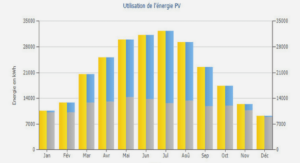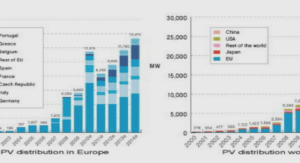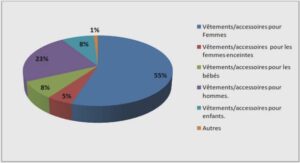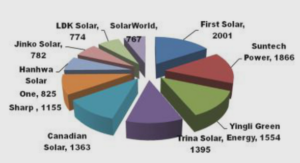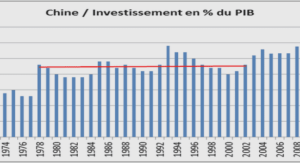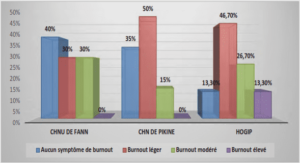Caractérisation des facteurs de contrôle de la recharge et des écoulements souterrains à différentes échelles de temps en zone de piedmont aride et hyper-aride
Subaerial alluvial boundary displacements from the late Neogene to the present day
Since the late Neogene, the monoclinal westward rotation of the forearc basin (Lamb et al., 1997) has influenced the piedmont morphology (Jordan et al., 2010). Through entrenchment processes (Cooke and Mason, 1973; Bull, 1977; Collinson, 1996; Dohrenwend and Parsons, 2009), the rotation of the monocline was responsible for the canyons (quebradas) created by incision of the piedmont surface. The early stages of the uplift can be seen on the surface of the piedmont on the west side of the Calacala flexure and downstream from the Cerro Tarapaca where many paleochannel directions (now disconnected from existing streams) diverge from the canyon axis (Figure I.9a). Similar observations were reported by Farias et al. (2005) in the Quebrada de Aroma. The late Neogene and Quaternary incisions formed erosional terraces in the canyon flanks (Figure I.9a and 9f). The following stages of the uplift caused a westward shift of the alluvial flows (entrenchment or downward shift processes). Due to these incisions, the erosional terraces located on the canyon flanks were abandoned (e.g. Figure I.9f). Under the arid and hyperarid climate, the movement of water (caused by recurring floods) in the alluvial deposits created sequences of gypsum evaporation pans (Gayo et al., 2012; Kirk-Lawlor et al., 2013; Jordan et al., 2014). The erosion of the Andean Piedmont and Precordillera reliefs produced significant discharges of terrigenous materials that overlapped the Miocene deposits on the downstream basin floor. These deposits (alluvial fans) comprise the late Neogene and Quaternary alluvial units in the basin floor (Figure I.9a). These units display three main stages of monocline movements during the Plio Pleistocene, Pleistocene, and Holocene times, when the alluvial discharge was intensified by short-term climate changes (Jordan et al., 2014). The successive southward abandonment of Holocene alluvial fans on the basin floor was caused by the south rotational shift of the Central Depression reported by Farias et al. (2005) who identified this process on the Quebrada de Aroma (Figure I.9a). On the basin floor, archaeological relics of farmland (unknown period) obscure the natural alluvial forms (Figure I.9e). The evidence for agricultural activity suggests a larger water resource (i.e. stream discharge) due to a wetter climate at that time.
Evolution of the Andean Piedmont from the Oligocene to the present
Based on the data and the results presented in the previous section, we propose a pattern for the development of the Andean Piedmont between 19.5°S and 20°S from the Oligocene to the present (Figure I.10). Between the Oligocene and the early Miocene (Figure I.10a), bedrock morphology controlled the structure of the alluvial cover (Azapa formation) and fostered alluvial paleocurrent directions inside paleovalleys, such as the “Laonzana paleovalley” and the “Coscaya paleovalley”. These paleovalleys are limited by significant bedrock highs that are aligned with the WTS structures. The paleovalleys fostered northwestward paleocurrents and restricted the east-west extension of the alluvial cover in the piedmont. Locally, tectonic features such as the CFS (Campahue Flexures System) close to the Morro Campahue, triggered secondary sedimentary processes (reworking of alluvial deposits). The northern part of the study area is characterized by the lack of bedrock relief. In the absence of control of the alluvial flows by bedrock relief, the deposits highlight alluvial paleocurrents in a westward direction, in agreement with a typical piedmont representation (Figure I.1). At the junction between the terrigenous deposits coming from the south (“Cosacaya and Laonzana paleovalley”) and from the east (“Aroma zone”), the dominant bedload controlled the organization of the sediments. During the early Miocene (Figure I.10b), the alluvial paleocurrents of the Oxaya formation were organized according to the variations in elevation caused by the subjacent topography. The subjacent morphology was formed by the bedrock relief, partially filled by the Azapa deposits, and by the ignimbrite sequences. Between the Cerro Violeta and the Western Cordillera, the topographic high and the tectonic activities (CFS) led to removal of all alluvial deposits through erosion and transport processes. In this area, the geomorphological context led to the absence of interbedded alluvial deposits between the ignimbrite sequences. Broad paleovalleys allowed the transport of terrigenous materials from the Western Cordillera toward the basin floor in various kilometer-wide channels. The “Guasquina paleovalley”, constrained by bedrock highs and tectonic features (Calacala flexure), fostered northwestward paleocurrents. Further north, in the “Aroma paleovalley”, the absence of bedrock relief caused west-southwestward paleocurrents, in agreement with the typical piedmont representation (Figure I.1). Due to the tectonic activity in the piedmont, the fault movements (e.g. Calacala flexures) led to the formation of syntectonic sedimentary features. During the middle and late Miocene, the erosion of the Western Cordillera led to broad coalescing braided alluvial fans on the piedmont surface (Figure I.10c). The distribution of the alluvial flows (El Diablo formation) along the piedmont surface depended on both the bedrock relief and tectonic events. The bedrock relief acted as barriers to sedimentation, obstructing alluvial flows from the Western Cordillera. These barriers resulted in a deposition deficit downstream, and increased the magnitude of the topographic depression. On the eastern side of Cerro Tarapaca, uplift movements caused the incision of the rocks underlying the El Diablo formation. These incisions created deep 34 canyons, such as the “Quipisca paleocanyons” network where the alluvial flows were controlled toward the west. In the downstream part of the Cerro Tarapaca and the Cerro Juan Morales, the topographic depression was filled by alluvial flow deposits coming from both the northern part of Cerro Tarapaca (via the “Tarapaca paleovalley”) and the topographic low located between the Cerro Tarapaca and Juan Morales. The topographic depression and the sedimentary filling are still visible in the landscape. Unlike the southern part of the study area, the northern part was characterized by the absence of bedrock relief, which led to the formation of a typical piedmont representation (Figure I.1) from the Western Cordillera toward the downstream basin floor. During the late Neogene and the Holocene, the westward rotation stages of the monocline (forearc basin) caused incisions in the piedmont (the current quebradas), leading to significant alluvial flow discharges (i.e. alluvial fan units) in the present basin floor (Figure I.10d)
Bedrock morphology and tectonic control of the architecture of the piedmont cover
Due to erosion, transport and deposit processes, the formation of the piedmont cover tends to erase any irregularities in the initial relief. This often leads to a typical representation of the architecture of the sedimentary cover (Figure I.1) that masks the original complexity of the piedmont area deposits. Based on the previous reconstitution of the Andean Piedmont, we propose a new geomorphological representation, highlighting the influence of bedrock morphology and tectonic features to complete the existing literature describing the controls and the structure of the sedimentary cover (e.g. Orton and Reading, 1993; Collinson, 1996; Dohrenwend and Parsons, 2009): from erosional areas, the terrigenous materials were transported through paleovalleys and paleochannels toward topographic depressions in the piedmont, where alluvial fans of significant size developed. Syntectonic sedimentary features are visible close to uplift block. The bedrock highs tend to obstruct the alluvial flows and act as sedimentary barriers. Downstream from kilometer scale bedrock highs, the deficit of terrigenous deposits amplifies the topographic depressions. The piedmont landscape and the architecture of the sedimentary cover depend on these geomorphological properties as well as on the tectonic, climatic and lithological controls throughout the piedmont area. 35 Figure I. 10 : Development of late Cenozoic piedmont cover (between 19.5°S and 20°S) and alluvial flow directions during the Azapa deposition (a), the Oxaya deposition (b), El Diablo deposition (c) and the late Neogene and Quaternary deposition (d).
Influence of the bedrock morphology on groundwater circulation
More than 60 springs representing the outlets of the main aquiferous layers and which provide information about the direction of groundwater circulation in the piedmont cover (Section 2.3), were spotted and mapped (Figure I.11). They are mainly located on the southern flanks of the main canyons, e.g. in the Quebrada de Tarapaca and Guasquina, which differs from a classical representation where outflows are located along both canyon flanks (Figure I.11). These springs are located at various geological contacts within the whole sedimentary cover: (a) At the base of the late Cenozoic sedimentary infilling (Figure I.11), about 45 springs were identified at the geological contact between the bedrock and the Azapa formation (eastern flank of the Cerro Violeta and Cerrillos) and between the bedrock and the El Diablo formation (Quebrada de Quipisca). This highlights the role of bedrock as an impervious boundary as well as the role of the paleo drainage system, which predated alluvial deposition stages, as one of the main preferential groundwater flow paths. (b) Within the sedimentary cover (Figure I.11), no springs were identified in the El Diablo formation. In contrast, about 15 springs were recognized (i) at the contact interface between the Oligocene porous rocks (Azapa formation) and fractured pyroclastic rocks of the Oxaya formation, in the Quebrada de Tarapaca close to the village of Laonzana, and (ii) between an ignimbrite and an interbedded alluvial layer of the Oxaya formation in the Quebrada de Guasquina. All these springs are located in the axis of the Laonzana and Guasquina paleovalleys and the Quipisca paleocanyons network, which is in agreement with the successive piedmont erosion and deposition stages (Figures I.10 and I.11). The groundwater, which previously infiltrated in gullies located on the piedmont and the Precordillera, flows in the sedimentary cover. Some flow paths are located at points of contrasted permeability (e.g. between fractured rocks and older porous rocks), but the main groundwater flow paths, as revealed by the presence of about 80% of the springs, are located within paleo drainage systems that predate the alluvial deposition stages (e.g. at the base of the basin sedimentary fill). The comparison of the groundwater and the piedmont geomorphological structures allows us to state that the groundwater preferentially flows in paleovalleys and paleochannels of the sedimentary cover while the bedrock highs limit groundwater circulation. This explains the lack of springs in the Quebrada de Aroma, on the western side of the Aroma Flexure (Figure I.11): the absence of uplifted bedrock morphology, as well as the east-west organization of the sedimentary cover (east-west paleovalley implementation since the Oligocene, Figure I.10) enables deeper westward groundwater circulation. At the piedmont scale, the pattern of present day groundwater circulation is highly dependent on changes in the architecture of the sedimentary cover and on the geomorphological structures that are influenced by the bedrock morphology and the 37 tectonic features. Indeed, the paleovalleys and paleochannels control the direction of the groundwater flows today. Characterization of the bedrock morphology thus appears to be a key element in understanding groundwater circulation in piedmont areas, and is easy to characterize through geological or geophysical field surveys.
Liste des illustrations |
